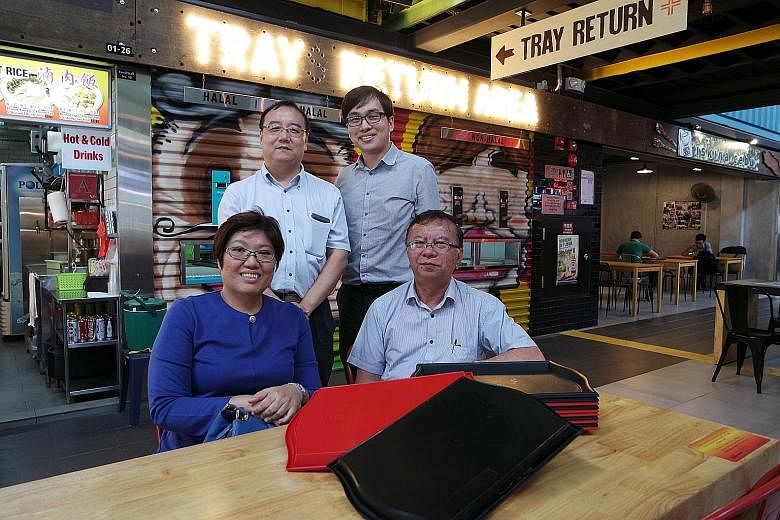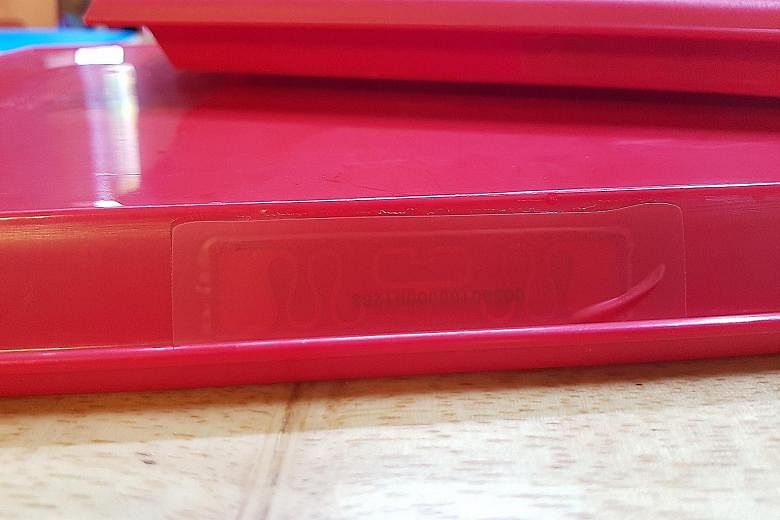At the Timbre+ hawker centre in one-north, over 95 per cent of diners return their trays after meals.
This impressive figure is not the result of an ongoing campaign or the use of prominent signs. It is thanks to an innovative radio frequency identification (RFID) tray-return system.
Mr Edward Chia, Timbre Group's managing director, said that during the planning of the 24,000 sq ft hawker centre, one of his goals was to streamline the dining process.
"There have been campaigns to promote the returning of trays but, so far, it hasn't quite sunk in," he said. "Also, even if people return their trays to an intermediate point like a trolley, that still requires cleaners to take the trays back to the washing area, which is inefficient."
Timbre+ uses a system installed by Tunity Technologies, an RFID solutions company, in partnership with A*Star's Singapore Institute of Manufacturing Technology (SIMTech). It is the first such deployment in a hawker centre here.
Diners pay a $1 deposit for an RFID-tagged tray at a food stall and, when they are done with their meal, they drop it off at a conveyor belt with an RFID reader. When the reader detects that a tray has been returned, a machine returns the deposit, and the tray carries on towards the washing station.
Mr Chia said that because of the automated tray-return system, which cost $280,000 to develop and install, Timbre+ needs to employ only three cleaners, instead of the eight otherwise needed.
RFID tags are something which most of us interact with on a daily basis, every time we tap an ez-link card or check out a library book. But over the years, the uses for such tags have grown.
A decade ago, RFID was used mostly in the logistics industry, to manage inventory and assets. Now, RFID can be used to keep track of anything - from the freshness of a plate of sushi to the movement of construction workers.
Ms Lim Peck Hui, managing director of Tunity Technologies, said that RFID has advantages over other forms of tagging such as barcodes and QR codes.
"RFID tags can be read at a distance, and you can take multiple readings at once, so all of the IDs can be captured very quickly," she said.
Mr He Wei, principal research engineer at SIMTech, said: "There is no line of sight needed. Even if a tag is facing in the other direction, it can still be captured."
Typically, ultra-high frequency tags like those used at Timbre+ can be read from up to 1m to 3m away.
Ms Lim explained that RFID has become more popular as its cost has fallen over the years. She estimated that a system that costs $10,000 to set up today would have cost over 10 times as much a decade ago. A system typically includes hardware such as tags, readers and an RFID tag printer, as well as software to handle the data.
Ms Lim said that because of factors such as lower cost, the manpower crunch and greater awareness of the technology, more and more firms are turning to RFID solutions to aid their workflow.
Since Tunity Technologies started in 2003, it has tagged a wide variety of objects - from fish tanks to museum artefacts and laundry.
"Twenty years ago, maybe because the price was higher, the only customers for RFID were the multinational corporations. You'd never hear of an SME wanting to do it," she said.
"But today, everybody is thinking about how they can use RFID to improve their processes."



